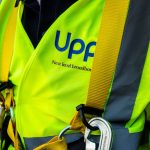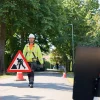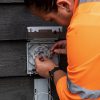Openreach List 81 New UK Areas for G.fast Ultrafast Broadband UPDATE
A further 81 new locations have today (November 2018 update) been confirmed as the next to benefit from Openreach’s (BT) roll-out of 330Mbps capable hybrid fibre G.fast “ultrafast broadband” ISP technology, which aims to cover 5.7 million UK homes and businesses by the end of 2020 (March 2021 financial year).
The G.fast (ITU G.9700/9701) service works in a similar way to existing Fibre-to-the-Cabinet (FTTC / VDSL2) technology by running a fibre optic cable to your local PCP Street Cabinet (note: VDSL2 has its own separate DSLAM cabinet – usually positioned close to the PCP cabinet), which is then fitted with an extension “pod” to house the line cards (this handles up to 48 ports, but it should eventually do 96). After that the service reaches your home via the existing copper cable.

Advertisement
G.fast generally offers two primary wholesale service tiers at 160Mbps (30Mbps upload) and 330Mbps (50Mbps upload), which ISPs market using slower “average” speeds due to the advertising rules. The service also attracts a fault threshold 100Mbps (here), which helps to ensure that only those able to get an “ultrafast” (100Mbps+) speed will be able to order it (most of those who can’t should still be able to take VDSL2).
We should point out that G.fast is being seen as a complement to Openreach’s separate roll-out of Gigabit capable Fibre-to-the-Premises (FTTP) technology, which is expected to cover 3 million premises by the end of 2020 and could then reach 10 million by around 2025. Crucially FTTP and G.fast will aim not to overbuild each other so as to maximise overall “ultrafast” coverage (a little bit of overlap is inevitable).
Consumers who order a G.fast line will be visited by an engineer (a self-install solution is coming here) and they will most likely provide you with a new Master Socket (NTE5C) and a modem (Huawei MT992), which can be plugged into an existing router. You can also expect to pay a premium of around +£10-£15 extra per month vs the previous generation of FTTC / VDSL2 services (those offered max speeds of up to 80Mbps).
The 81 New G.fast Locations (Nov 2018 Update)
Acomb, Addiscombe, Aintree, Ascot, Bargoed (Cardiff), Barking, Barnsley, Beckenham, Beulah Hill (Croydon), Blackpool, Bootle, Bradford, Broadwell, Canonbury, Chingford, Colchester, Colindale, Dalton in Furness, Daubhill, Deal, Dover, Downloand (Croydon), Earley, Eastbourne, Eastleigh, Enfield, Faversham, Felixstowe, Feltham, Forest Hill, Godalming, Greenwich, Hamilton, Harlesden, Hatch End, Healing, Hendon, Hitchin, Hyde, Kemptown, Kentish Town, Kenton, Leicester Central, Leytonstone, Lincoln, Littlehampton, Llanrumney, Lords, Lower Holloway, Malden, Midland (Birmingham), Mill Hill, Moss Side, North Wembley, Northampton, Oldham, Pendleton, Plympton, Ponders End, Prescot, Primrose hill, Purfleet, Rainham, Rock Ferry, Rushey Green, Staylbridge, Stamford, Stoke City, Sydenham (Croydon), Teddington, Tewkesbury, Tranent (South East Scotland), Upper Holloway, Urmston (South Manchester), Wallington, Waterloo, Wembley, West Kensington, West Wickham, Willesden, Worthing Central.
One significant drawback with G.fast is that its coverage is much more limited than VDSL2. G.fast typically prefers copper lines (from street cabinet to homes) that are shorter than c.350 metres (it can work at up to c.500 metres max but only very slowly), while VDSL2 could in some cases still operate at line lengths of up to c.2km (2000 metres); albeit at much slower speeds due to signal degradation over distance.
Advertisement
In order to get some of the best G.fast speeds you generally need a line that’s under c.200 metres and this is a big hindrance to network coverage, although future improvements (e.g. harnessing 212MHz of spectrum instead of 106MHz today) could improve this but it’s still a very restricted technology. On the upside G.fast is comparatively cheap and very quick to deploy (no need to dig new cables etc.).
Kim Mears, MD for Strategic Infrastructure Development, said:
“Currently, the UK is a world leader in digital infrastructure and services, but as the digital revolution rushes forwards and the demand for data continues to grow, we need to sure we stay ahead of the curve. That’s why we’re investing in faster, more reliable network infrastructure to facilitate all the activities we want to do now, and also those we haven’t even dreamt of doing in ten years’ time.”
As this is a rapid commercial deployment (no public funding involved) then it’s widely expected that most of the areas where Openreach are deploying will be urban, which also suggests a strong competitive focus on areas where Virgin Media’s faster cable (DOCSIS) network may already be present. Sadly rural areas are unlikely to benefit, although no doubt there will be a few.
One other point to make is that Openreach won’t be covering 100% of every area listed for the roll-out, although the proportion of premises reached will vary from location to location and they often come back later to do further in-fill after the first deployment. In some urban areas not getting G.fast may even be a blessing in disguise as you could be more likely to benefit from FTTP in the future.
If your area isn’t mentioned in today’s announcement (or previous ones) then don’t worry, more announcements will follow over the next couple of years.
Advertisement
Previous G.fast Rollout Announcements
* Pilot 1 (August 2017)
* Pilot 2 (December 2017) – c.1 Million Premises (Pilot 1 + 2)
* June 2018 Update – 59 Locations – c.370,000 Premises added
UPDATE 28th Nov 2018 – 10:13am
A tiny bit of extra data has been revealed, which confirms the number of homes and businesses that will benefit in the South East (see below). Sadly Openreach has not released similar data for the other areas covered by this roll-out phase.
Berkshire 20,000
Essex 15,000
Hampshire 11,000
Hertfordshire 6,000
Kent 21,000
London 464,000
Surrey 10,000
Sussex 32,000
Mark is a professional technology writer, IT consultant and computer engineer from Dorset (England), he also founded ISPreview in 1999 and enjoys analysing the latest telecoms and broadband developments. Find me on X (Twitter), Mastodon, Facebook, BlueSky, Threads.net and Linkedin.
« Report – UK WiFi Download Speeds are Faster than Mobile Networks

















































Comments are closed